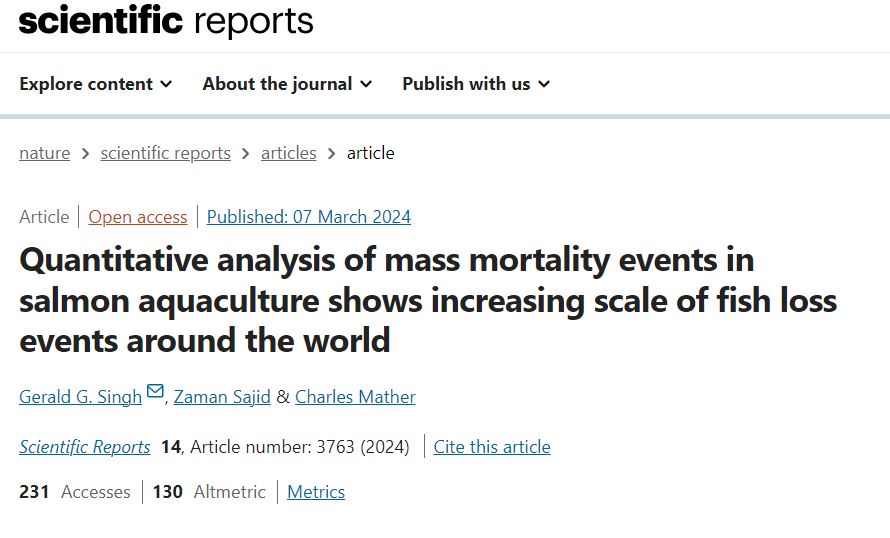 Dauði eldislaxa fer vaxandi í sjókvíum í öllum heimshlutum þar sem þessi grimmdarlegi iðnaður er stundaður. Þetta sýnir umfangsmikil tölfræðigreining sem var að birtast og hægt er að skoða með því að smella á hlekkinn sem fylgir hér fyrir neðan.
Dauði eldislaxa fer vaxandi í sjókvíum í öllum heimshlutum þar sem þessi grimmdarlegi iðnaður er stundaður. Þetta sýnir umfangsmikil tölfræðigreining sem var að birtast og hægt er að skoða með því að smella á hlekkinn sem fylgir hér fyrir neðan.
Fyrrum stjórnarformaður Arnarlax hefur sagt að sjókvíaeldisfyrirtækin geri ráð fyrir um 20 prósent ,,afföllum” á ári. Það þýðir að reiknað er með í viðskiptaáætlunum fyrirtækjanna að 36 prósent eldisdýrana lifi ekki af tveggja ára eldislotu í sjónum.
Hlutfallið var enn hærra hér við land undanfarin tvö ár. Var rúm 19 prósent 2022 og um 23 prósent 2023.
Sjókvíeldi á laxi er óboðleg aðferð við matvælaframleiðslu.
Úrdráttur úr rannsókninni sem var birt í tímaritinu Nature:
Globally, salmon aquaculture promises to contribute to sustainable sources of animal protein for a growing human population. However, the growth of the industry also includes increased reports of mass mortality events—disaster events where large numbers of fish die in short periods of time. As salmon production increases in scale and more technology is used to grow salmon in contexts otherwise not suited for them, there is a possibility for more frequent and more severe mortality events. Despite investigations into specific cases of mass mortality events—no global study has been conducted to see if large scale mortality is increasing in frequency and scale. Using a global dataset of publicly available and government-collated data on salmon mortality events including nations responsible for the majority of salmon aquaculture, we document trends in mortality events, showing that in some of the major salmon producing nations of the world (in particular Norway, Canada, and the UK), mass mortality events have increased in frequency from 2012 to 2022. We also show that the scope of mass mortality events has increased over time—that is, the upper bound of how many fish were killed in a specific mortality event has increased over time. Finally, the expected maximum size of a mass mortality event differs from country to country, but is likely much larger than site and jurisdictional thresholds of concern for animal welfare, early warning thresholds, and capacity to respond to mortality events. The consequences of the increased scale and scope of mass mortality events extend past aquaculture production to include severe consequences to aquaculture companies and to coastal communities who depend on aquaculture. Our results agree with predictions of the concept of “manufactured risk”, which suggests that risk emerges from the aggressive use of technology to optimize production in variable environments, and we argue that there is a need for more fine-scale and standard data collection on salmon mortality events, and that future investigations into salmon aquaculture should increase focus on disaster potential and realization.

